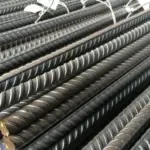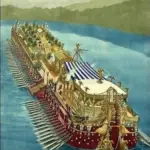Nestled in the rugged landscapes of southwest Colorado, Mesa Verde stands as a remarkable testament to the ingenuity, resilience, and cultural richness of the Ancestral Puebloan people. Recognized as one of the most well-preserved prehistoric settlement landscapes in North America, this UNESCO World Heritage Site offers an unparalleled glimpse into a civilization that thrived for nearly nine centuries, from 450 to 1300 CE.

Geography and Significance
Mesa Verde, meaning “Green Table” in Spanish, is a high plateau that rises over 2,600 meters (8,500 feet) above sea level. Its location provided the Ancestral Puebloans with natural protection and access to diverse resources, making it an ideal place for habitation and community development.
The plateau is dotted with a dense concentration of archaeological sites, including over 600 cliff dwellings and more than 4,000 other structures such as pithouses, farming terraces, and ceremonial kivas. These settlements showcase the architectural and agricultural innovations of the Ancestral Puebloans, reflecting their ability to adapt to and thrive in a challenging environment.

Cultural and Historical Context
The Ancestral Puebloan culture evolved over centuries, transitioning from a primarily nomadic lifestyle to one centered around agriculture and community. Mesa Verde was a focal point of this transformation.
- Early Occupation (450-750 CE):
The earliest inhabitants of Mesa Verde lived in simple pithouses. These semi-subterranean dwellings, constructed with wooden frames and mud, were used for shelter and communal activities. During this period, the Ancestral Puebloans began cultivating maize, beans, and squash, laying the foundation for a more settled way of life. - Village Development (750-1150 CE):
As populations grew, the people of Mesa Verde built larger above-ground structures made from sandstone, mortar, and timber. These villages often included multi-story buildings and kivas, circular ceremonial spaces used for religious and social gatherings. - Cliff Dwellings Era (1150-1300 CE):
The most iconic period in Mesa Verde’s history saw the construction of elaborate cliff dwellings. These structures, built into the alcoves of steep canyon walls, provided both security and insulation from the harsh climate. Notable examples include Cliff Palace, Spruce Tree House, and Balcony House, which feature complex layouts with rooms, storage spaces, and kivas.
Architectural Achievements
The architecture of Mesa Verde is a testament to the ingenuity and craftsmanship of the Ancestral Puebloans. The cliff dwellings were built with meticulous planning, utilizing sandstone blocks and adobe mortar to create stable and enduring structures.
- Cliff Palace: The largest and most famous cliff dwelling, Cliff Palace consists of 150 rooms and 23 kivas. It is believed to have housed around 100 people and served as a hub for social and ceremonial activities.
- Spruce Tree House: One of the best-preserved dwellings, Spruce Tree House features 130 rooms and 8 kivas, offering insights into daily life and community organization.
- Balcony House: Known for its dramatic location and challenging access, Balcony House reflects the strategic and defensive considerations of its builders.
Agricultural Practices
The Ancestral Puebloans at Mesa Verde developed advanced agricultural techniques to sustain their growing communities. They constructed terraces to maximize arable land and created sophisticated irrigation systems to manage water resources. The cultivation of maize, beans, and squash formed the backbone of their diet, supplemented by wild plants and game.
Spiritual and Ceremonial Life
Kivas played a central role in the spiritual and communal life of the Ancestral Puebloans. These subterranean structures, often circular and roofed, were used for rituals, ceremonies, and gatherings. Their design, featuring a fire pit, ventilation system, and symbolic elements like the sipapu (a small hole symbolizing the place of emergence), reflects the cultural and religious beliefs of the Puebloan people.
Decline and Legacy
By the late 13th century, the Ancestral Puebloans began to abandon Mesa Verde. The reasons for this migration are still debated, but evidence points to a combination of factors, including prolonged drought, resource depletion, and social or political upheaval. The people moved southward, integrating into other Puebloan communities in present-day New Mexico and Arizona.
Despite their departure, the Ancestral Puebloans left an enduring legacy. Their innovations in architecture, agriculture, and community organization continue to inspire admiration and respect.
Like Us on Facebook!
Preservation and Modern Significance
Today, Mesa Verde is preserved as a national park, established in 1906 to protect its archaeological treasures. Visitors can explore the cliff dwellings, hike through the scenic landscapes, and learn about the Ancestral Puebloan culture through exhibits and guided tours.
Subscribe Us on YouTube!
As a UNESCO World Heritage Site, Mesa Verde serves as a vital link to the past, offering invaluable insights into the ingenuity and resilience of one of North America’s most remarkable civilizations.
Mesa Verde is more than an archaeological site; it is a symbol of human creativity and adaptability. Its well-preserved settlements provide a profound connection to the Ancestral Puebloans, whose legacy continues to enrich our understanding of history and culture.



















